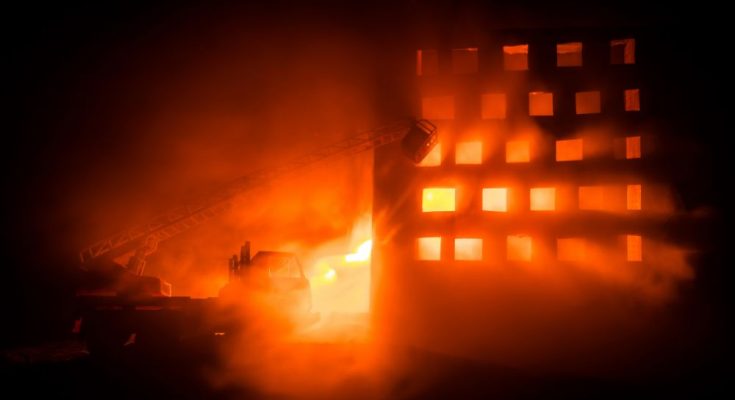There are two main types of fire protection that buildings utilize: active and passive fire protection. Active fire protection methods require manual or automatic activation, but passive fire protection features provide constant protection. Learn more about these safety features and some examples of passive fire protection to consider for your own building.
Intumescent Paints/Fire Coatings
Fire-resistant coatings, also known as intumescent paints, are a type of chemical coating that painters apply to building materials. Painters apply this specialty coating to the building’s structural materials during the construction stage while they can access the building’s framework.
Intumescent paints provide passive fire protection because they always remain active. The chemicals in intumescent paints release when exposed to heat, and the coating expands up to 100 times its size, protecting the valuable building framework underneath. Learn more about intumescent paints to better understand how they could protect against fires in your building projects.
Compartmentation
Fire compartmentation is another example of passive fire protection that contractors and architects incorporate into a building’s design. This process involves subdividing a building into small sections to strategically limit and contain the spread of a potential fire. If building owners and caretakers maintain these fire-resistant walls, ceilings, and flooring, compartmentation can defend certain areas of a building, such as fire escape routes and vulnerable areas.
Fire Doors & Windows
Fire doors, windows, and other installations use sturdier materials than average installations. These materials are often fire-resistant and hold up to pressurized conditions. Builders install fire doors and windows with the building’s original construction or as an upgrade later. Building planners utilize fire doors as a clear means of exit when drafting emergency evacuation plans. Fire doors and windows also feature smoke seals, which help aid in compartmentation and prevent the spread of fire.
These examples of passive fire protection provide additional safety and peace of mind for your building’s occupants. If you’re a business owner or contractor planning a building or structure, remember these passive fire protection examples and utilize them alongside active fire safety installations.



